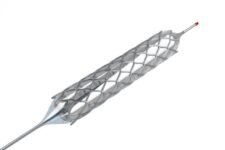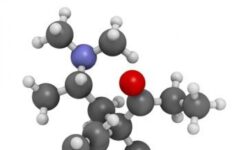Original title: Impact of an invasive strategy on five years outcomein men and women with Non-ST-Elevation Acute Coronary Syndromes. Reference: Joakim Alfredsson et al. Am Heart J. 2014;Epub ahead of print. This meta-analysis included patients with non-ST-elevation acute coronary syndrome (NSTE ACS) from randomized studies FRISC II, ICTUS and RITA 3 and compared the routine invasive strategy…
Reduced risk of acute, late and very late thrombosis with new generations of DES versus BMS in the acute myocardial context
Original title: Stent thrombosis in new-generation drug-eluting stents in patients with STEMI undergoing primary PCI: a report from SCAAR. Reference: Sarno G et al. J Am Coll Cardiol. 2014;Epub ahead of print. This study evaluated 34147 consecutive patients suffering acute myocardial infarction with ST-segment elevation included in the SCAAR registry (Swedish Coronary Angiography and Angioplasty Registry) undergoing primary…
Percutaneous Closure of Postinfarction Ventricular Septal Defect, an early alternative to surgery.
Original title: Percutaneous Closure of Postinfarction Ventricular Septal Defect: In-Hospital Outcomes and Long-Term Follow-Up of UK Experience. Reference: Circulation. 2014 Jun 10;129(23):2395-402. As a mechanical post AMI complication, interventricular communication carries a grim prognosis. Surgery has achieved reasonable outcomes but only for those patients who survive the acute phase of healing. Percutaneous closure is a viable early alternative. …
Best ejection fraction using Metoprolol as pretreatment in acute myocardial infarction
Original title: Long-Term Benefict of Early Pre-Reperfusion Metoprolol Administraction in Patients With Acute Myocardial Infaction. From the METOCARD-CNIC Trial. Reference: Gonzalo Pizarro et, al. J Am Coll Cardiol 20141;63:2356-62 The anterior infarction with ST- segment elevation has a high morbidity and mortality, both in the acute phase as well as after the presence of heart failure, arrhythmias…
Contrast-induced nephropathy in the context of PCI, a lot more frequent in women
Original title: Female gender and contrast-induced nephropathy in primary percutaneous intervention for ST-segment elevatio myocardial infarction. Reference: Stefano Lucreziotti, et al. International Journal of Cardiology 2014;174:37-42 Primary PCI has been demonstrated beneficial. However, it is associated to greater contrast-induced nephropathy (CIN) with increased in hospital and long term morbidity and mortality. In addition, several reports have shown…
Elevated C-reactive protein levels could predict future events associated to non-culprit lesions. PROSPECT study sub analysis.
Original title: Relation of C-reactive protein levels to instability of untreated vulnerable coronary plaques (from the PROSPECT study). Reference: Kelly CR et al. Am J Cardiol. 2014;Epub ahead of print. The original PROSPECT study included 697 patients with acute coronary syndrome (ACS) undergoing culprit artery percutaneous coronary intervention (PCI) followed by intravascular ultrasound (IVUS) to the rest of…
The radial access is a viable alternative in infarction complicated with cardiogenic shock
Original title: Arterial access site utilization in cardiogenic shock in the United Kingdom: Is radial access feasible? Reference: Mamas A. Mamas, et al. Am Heart J 2014;167:900-08 Cardiogenic shock in the context of acute myocardial infarction is associated with high mortality, and represents approximately 10% of major bleeding complications. Radial Access reduces mortality mainly by reducing bleeding; however,…
Severe coronary calcification is a predictor of coronary events in acute coronary syndromes
Original title: Ischemic Outcomes After Coronary Intervention of Calcified Vessels in Acute Coronary Syndromes. Pooled Analysis From the HORIZONS and ACUITY Trials. Reference: Philippe Généreux, et al. J Am Coll Cardiol 2014;63:1845-54 Calcification of the arteries has always been a challenge and a generator of problems during coronary angioplasty, but its impact on acute coronary syndromes has not…
Blush reduction in a not responsible vessel is a prognostic marker in those receiving angioplasty in the culprit vessel.
Original title: Impact of Nonculprit Vessel Myocardial Perfusion on Outcomes of Patients Undergoing Percutaneos Coronary OIntervention for Acute Coronary Síndromes. Analysis From ACUITY Trial. Reference: Alexandra Lansky, et al. JAAC Cardiovascular Intervention 2014,7:266-275 In Non ST elevation Acute Coronary Syndrome (NSTE-ACS) is demonstrated that revascularization of the culprit vessel is beneficial, but strategy it is not yet clear…
Higher event rate in those with non-ST elevation ACS who received revascularization at PLATO study. Beyond this, ticagrelor reduced mortality.
Original title: Ticagrelor vs. clopidogrel in patients with non-ST-elevation acute coronary syndrome with or without revascularization: results from the PLATO trial. Reference: Lindholm D et al. Eur Heart J. 2014; Epub ahead of print. The PLATO study randomized 18624 patients with ACS to aspirin and ticagrelor (180 mg loading dose followed by 90 mg every 12 hours) versus…
Infusion of bone marrow mononuclear cells in acute myocardial infarction, meta-analysis of all published to date.
Original title: Intracoronary stem cell infusion after acute myocardial infarction: a meta-analysis and update on clinical trials. Reference: de Jong R, Houtgraaf JH, Samiei S, et al. Circ Cardiovasc Interv. 2014;Epub ahead of print. This meta-analysis included 30 randomized studies conducted between July 2002 and September 2013, totalling 2037 patients with acute myocardial infarction. Of the total, 1218…










